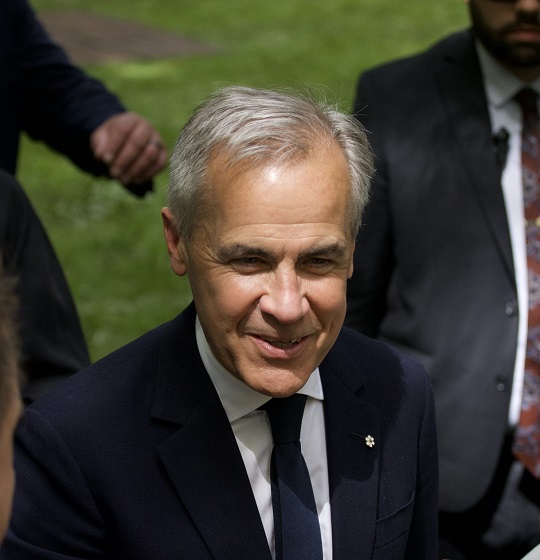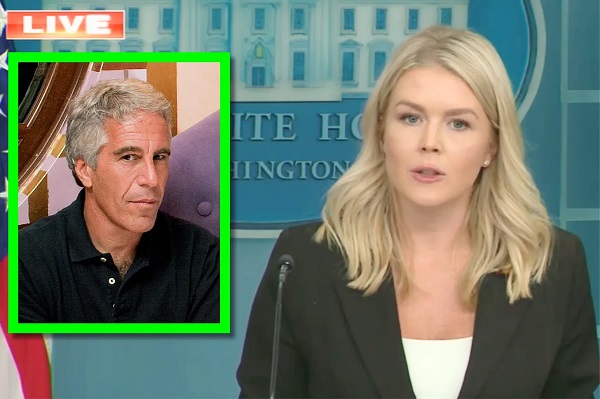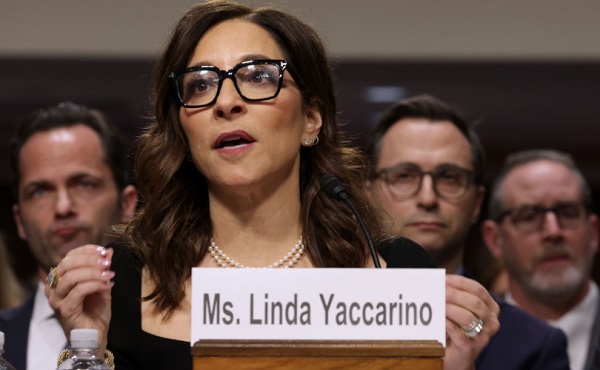Alberta
Suspect in stolen vehicle kills one and seriously injures another in wild chase

News release from Beaumont RCMP
Beaumont RCMP seeking public assistance in locating suspect in fatal collision
On Feb. 24, 2024, at approximately 9:00 p.m., Beaumont RCMP located a person suspected of theft, in a parked 15-foot cube moving truck, at a business on 50 Street in Beaumont. When members approached the truck and attempted an arrest, one male driver and one female passenger rammed into a police vehicle and fled the scene at a high rate of speed. Patrols were initiated to find the truck and, a short time later, it was observed on 50 Street and Highway 814 in Beaumont at a high rate of speed.
Meanwhile, Edmonton Police Service’s (EPS) Air One Helicopter was notified and provided its location to RCMP members. Multiple surrounding RCMP detachments, including Leduc and Strathcona, responded to assist. As the truck was driving into Edmonton, a tire deflation device was deployed by RCMP, disabling multiple civilian vehicles. Consequently, an adult female exited one of the civilian vehicles and was fatally struck by the suspect truck. The truck failed to stop and continued driving into Edmonton.
The suspect vehicle then collided with another civilian vehicle, leaving an adult male in serious non-life-threatening condition. The truck was located at 50 Street and 22 Avenue in Southwest Edmonton.
Further investigation revealed that the driver of the truck, an adult male, then proceeded to steal a parked 2020 Honda Civic at a nearby convenience store. This vehicle contained a child who was safely recovered and reunited with his family a short time later. The male suspect has yet to be located.
No other members of the public or officers were injured during this incident.
“On behalf of the RCMP, I would like to send our heartfelt condolences to the family members of the victim,” said Superintendent Leanne MacMillian, Assistant Central Alberta District Officer. “This is a devastating incident that will leave a mark on family and friends for years to come. Please understand that you will be in our thoughts as we progress through this investigation.”
In compliance with legislative requirements, the Director of Law Enforcement was immediately notified causing the deployment of ASIRT to conduct an independent investigation. The RCMP believes in accountability and transparency and in so doing will provide full support to the ASIRT investigators and also conduct its own internal review. Events like this are difficult for the communities in which they occur, as well as the general public and RCMP officers involved. RCMP officers recognize the trust placed in them to use force that is necessary, proportional and reasonable and in so doing remain fully accountable.
The RCMP are actively investigating this occurrence and are seeking the public’s assistance in locating a stolen, dark grey 4-door Honda Civic with Alberta license place E98-099. The vehicle was stolen by a male suspect described as being approximately 5’11’’ and was last seen wearing a black hoodie with white text on the front, brown shorts and black shoes.
If you have any information about this crime or those responsible, you are asked to contact the Beaumont RCMP at 780-929-7400. If you wish to remain anonymous you can contact Crime Stoppers by phone at 1‐800‐222‐8477 (TIPS), by Internet at www.tipsubmit.com or by SMS (check your local Crime Stoppers www.crimestoppers.ab.ca for instructions).
Alberta
Cross-Canada NGL corridor will stretch from B.C. to Ontario

Keyera Corp.’s natural gas liquids facilities in Fort Saskatchewan. Photo courtesy Keyera Corp.
From the Canadian Energy Centre
By Will Gibson
Keyera ‘Canadianizes’ natural gas liquids with $5.15 billion acquisition
Sarnia, Ont., which sits on the southern tip of Lake Huron and peers across the St. Clair River to Michigan, is a crucial energy hub for much of the eastern half of Canada and parts of the United States.
With more than 60 industrial facilities including refineries and chemical plants that produce everything from petroleum, resins, synthetic rubber, plastics, lubricants, paint, cosmetics and food additives in the southwestern Ontario city, Mayor Mike Bradley admits the ongoing dialogue about tariffs with Canada’s southern neighbour hits close to home.
So Bradley welcomed the announcement that Calgary-based Keyera Corp. will acquire the majority of Plains American Pipelines LLP’s Canadian natural gas liquids (NGL) business, creating a cross-Canada NGL corridor that includes a storage hub in Sarnia.
“As a border city, we’ve been on the frontline of the tariff wars, so we support anything that helps enhance Canadian sovereignty and jobs,” says the long-time mayor, who was first elected in 1988.
The assets in Sarnia are a key piece of the $5.15 billion transaction, which will connect natural gas liquids from the growing Montney and Duvernay plays in B.C. and Alberta to markets in central Canada and the eastern U.S. seaboard.
NGLs are hydrocarbons found within natural gas streams including ethane, propane and pentanes. They are important energy sources and used to produce a wide range of everyday items, from plastics and clothing to fuels.
Keyera CEO Dean Setoguchi cast the proposed acquisition as an act of repatriation.
“This transaction brings key NGL infrastructure under Canadian ownership, enhancing domestic energy capabilities and reinforcing Canada’s economic resilience by keeping value and decision-making closer to home,” Setoguchi told analysts in a June 17 call.
“Plains’ portfolio forms a fully integrated cross Canada NGL system connecting Western Canada supply to key demand centres across the Prairie provinces, Ontario and eastern U.S.,” he said.
“The system includes strategic hubs like Empress, Fort Saskatchewan and Sarnia – which provide a reliable source of Canadian NGL supply to extensive fractionation, storage, pipeline and logistics infrastructure.”
Martin King, RBN Energy’s managing director of North America Energy Market Analysis, sees Keyera’s ability to “Canadianize” its NGL infrastructure as improving the company’s growth prospects.
“It allows them to tap into the Duvernay and Montney, which are the fastest growing NGL plays in North America and gives them some key assets throughout the country,” said the Calgary-based analyst.
“The crown assets are probably the straddle plants in Empress, which help strip out the butane, ethane and other liquids for condensate. It also positions them well to serve the eastern half of the country.”
And that’s something welcomed in Sarnia.
“Having a Canadian source for natural gas would be our preference so we see Keyera’s acquisition as strengthening our region as an energy hub,” Bradley said.
“We are optimistic this will be good for our region in the long run.”
The acquisition is expected to close in the first quarter of 2026, pending regulatory approvals.
Meanwhile, the governments of Ontario and Alberta are joining forces to strengthen the economies of both regions, and the country, by advancing major infrastructure projects including pipelines, ports and rail.
A joint feasibility study is expected this year on how to move major private sector-led investments forward.
Alberta
Alberta school boards required to meet new standards for school library materials with regard to sexual content

Alberta’s government has introduced new standards to ensure school library materials are age-appropriate.
School libraries should be safe and supportive places where students can learn and explore without being exposed to inappropriate sexual content. However, in the absence of a consistent standard for selecting age-appropriate library materials, school boards have taken different approaches, leading to concerns about safeguards in place.
In response to these concerns, and informed by feedback from education partners and the public, Alberta’s government has created standards to provide school boards with clear direction on the selection, availability and access to school library materials, such as books.
“Our actions to ensure that materials in school libraries don’t expose children to sexual content were never about banning books. These new standards are to ensure that school boards have clear guidance to ensure age-appropriate access to school library materials, while reflecting the values and priorities of Albertans.”
The new standards set clear expectations for school library materials with regard to sexual content and require school boards to implement policies to support these standards.
Standards for school library materials
Under the new standards, school libraries are not permitted to include library materials containing explicit sexual content. Non-explicit sexual content may be accessible to students in Grade 10 and above, provided it is age-appropriate.
“Protecting kids from explicit content is common sense. LGBTQ youth, like all children, deserve to see themselves in stories that are age-appropriate, supportive and affirming – not in material that sexualizes or confuses them.”
School boards must also regularly review their school library collections, publish a full list of available materials and ensure that a staff member supervises students’ access to school library materials. School boards will have to remove any materials with explicit sexual content from their school libraries by October 1.
School board policies and procedures
All school boards must have publicly available policies that align with the new standards for selecting and managing library materials by January 1, 2026. School boards can either create new policies or update existing ones to meet these requirements.
These policies must outline how school library materials are selected and reviewed, how staff supervise students’ access throughout the school day, and how a student, parent, school board employee or other member of the school community can request a review or removal of materials in the school library. School boards are also required to clearly communicate these policies to employees, students and parents before January 2026.
“A robust, grade- and age-appropriate library catalogue is vital for student success. We welcome the ministry’s initiative to establish consistent standards and appreciate the ongoing consultation to help craft a plan that will serve our families and communities well.”
“Red Deer Public Schools welcomes the new provincial standards for school library materials. Our division is committed to maintaining welcoming, respectful learning spaces where students can grow and thrive. Under the new standards for school libraries, we remain dedicated to providing learning resources that reflect our values and support student success.”
Quick facts
- The new standards will apply to public, separate, francophone, charter and independent schools.
- The ministerial order does not apply to municipal libraries located within schools or materials selected for use by teachers as learning and teaching resources.
- From May 26 to June 6, almost 80,000 people completed an online survey to provide feedback on the creation of consistent standards to ensure the age-appropriateness of materials available to students in school libraries.
Related information
- Ministerial Order
- School library standards engagement
- Reference Materials: Content warning: this document contains graphic content that may be disturbing to viewers and is not appropriate for young viewers. Viewer discretion is advised.
-

 Business2 days ago
Business2 days agoTrump slaps Brazil with tariffs over social media censorship
-

 National1 day ago
National1 day agoHow Long Will Mark Carney’s Post-Election Honeymoon Last? – Michelle Rempel Garner
-

 espionage1 day ago
espionage1 day agoFBI’s Dan Bongino may resign after dispute about Epstein files with Pam Bondi
-

 Business2 days ago
Business2 days agoCBC six-figure salaries soar
-

 Addictions2 days ago
Addictions2 days agoCan addiction be predicted—and prevented?
-

 International2 days ago
International2 days agoSupport for the Ukraine war continues because no one elected is actually in charge.
-

 Brownstone Institute2 days ago
Brownstone Institute2 days agoNet Zero: The Mystery of the Falling Fertility
-

 Business2 days ago
Business2 days agoTrump confirms 35% tariff on Canada, warns more could come







